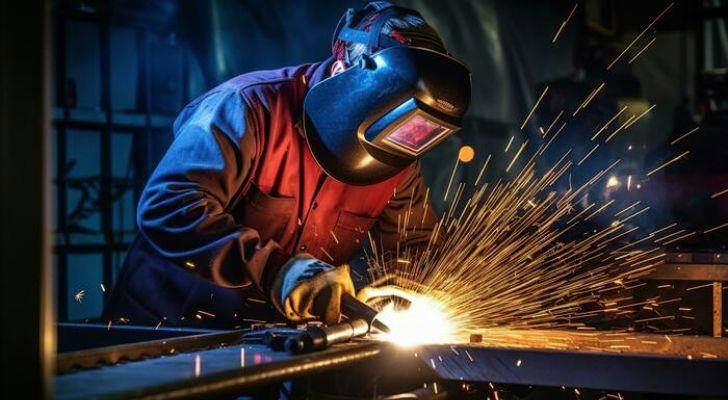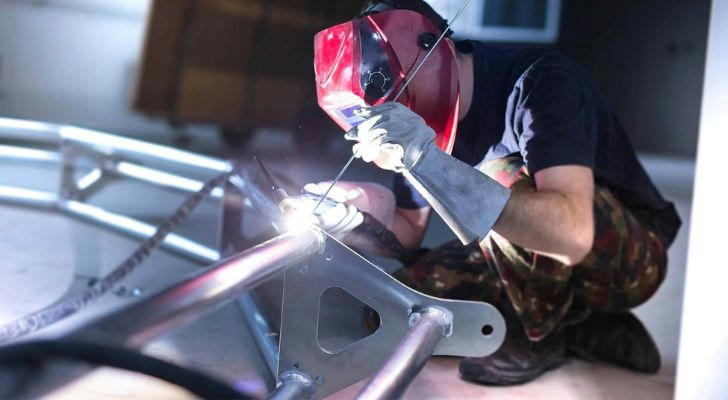A Beginner’s Guide to Welding Jobs in the U.S.
Welding is a vital skill in many American industries, from construction and automotive to manufacturing and infrastructure. For individuals exploring hands-on careers, welding offers a path with long-term potential, technical growth, and widespread demand. This guide provides a comprehensive overview of welding jobs in the U.S., focusing on the nature of the work, the skills needed, pathways to entry, job outlook, and more.

What Does a Welder Do?
Welders join metal parts together using high heat and sometimes pressure. This work is essential in building everything from bridges and pipelines to ships and vehicles. A welder's responsibilities vary depending on the industry and job site but generally include:
- Reading blueprints and technical drawings
- Operating welding equipment safely
- Inspecting welds for structural soundness
- Performing routine maintenance on tools and machinery
- Following safety procedures and compliance standards
Common types of welding include MIG (Metal Inert Gas), TIG (Tungsten Inert Gas), Stick, and Flux-Cored Arc Welding, each suited for different materials and use cases.
Skills and Qualities Needed
Success in welding requires more than technical ability. Employers often look for:
- Steady hands and good hand-eye coordination
- Physical stamina and strength
- Attention to detail
- Mechanical aptitude
- Familiarity with safety protocols
While welding may appear purely manual, it often demands critical thinking and problem-solving, especially when working with complex designs or challenging environments.
How to Get Started in Welding
Most welding jobs require formal training. While a college degree isn’t necessary, vocational programs or trade schools typically offer certification courses ranging from a few months to two years. Some high schools also offer introductory courses.
Key training options include:
- Trade schools and community colleges
- Union apprenticeship programs
- Military technical training
Certifications from the American Welding Society (AWS), such as Certified Welder (CW) or Certified Welding Inspector (CWI), can significantly enhance employability.

Welding Specializations
Welding is not a one-size-fits-all trade. There are several areas in which welders can specialize, including:
- Structural welding (buildings, bridges)
- Pipe welding (oil and gas industry)
- Underwater welding (marine construction and repair)
- Aerospace welding (aircraft and spacecraft components)
- Automotive welding (vehicle assembly and repair)
Each specialty may have its own requirements, tools, and safety standards.
Wages and Job Outlook
According to the U.S. Bureau of Labor Statistics (BLS), the median annual wage for welders, cutters, solderers, and brazers was $48,940 as of May 2023. The highest 10% earned over $66,000, particularly those in specialized fields or remote locations.
Job growth in welding is expected to remain steady, especially in infrastructure and energy sectors. The BLS projects about 42,600 new openings for welders each year, driven by retirements and industry demand.
Typical Work Environments
Welders work in various settings:
- Construction sites
- Shipyards
- Manufacturing plants
- Oil and gas facilities
- Repair shops
Some positions require travel, outdoor work, or physically demanding tasks in confined spaces or extreme temperatures. Safety is a top priority, and most jobs require protective gear like helmets, gloves, and fire-resistant clothing.
Opportunities for Advancement
Experienced welders may move into supervisory roles, quality control, or training positions. Others pursue further certifications or move into inspection or engineering support.
Skilled welders are often recruited for industrial shutdowns, pipeline projects, and government contracts, which can lead to higher pay and additional benefits.

Is Welding a Good Fit?
Those who enjoy working with their hands, solving mechanical problems, and being part of building something tangible often find welding to be a satisfying career. It also appeals to those who prefer structured tasks and clear procedures.
It’s important to consider the physical demands, safety requirements, and sometimes irregular hours that come with welding jobs. However, for many, the trade offers a stable path with room for growth.
Resources and Next Steps
Those interested in welding can begin by researching local trade schools or workforce development programs. Organizations like the American Welding Society and local union chapters offer information on training and certifications.
Job seekers can also explore openings through:
- State workforce agencies
- Industry-specific job boards
- Career fairs and technical expos
Conclusion
Welding plays a critical role in maintaining and building America’s infrastructure and industry. With multiple entry paths and specializations, this trade offers a solid foundation for those looking to start or transition into a career with practical skills and long-term opportunities.
Aspiring welders benefit from understanding the technical, physical, and professional requirements involved. With the right training and mindset, welding can become more than just a job—it can be a lifelong profession.
